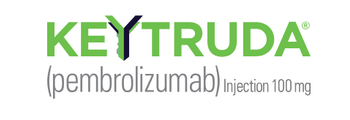
Increased Risk of Keratitis in Lung Cancer Patients Treated with EGFR Inhibitors
In the past, the main treatment for patients with advanced non-small cell lung cancer was cytotoxic chemotherapy, which kills cancer cells as well as healthy cells and causes significant side effects. Since the early 2000s, advancements in understanding the molecular pathways of NSCLC have led to the development of targeted drugs that can kill cancer cells while sparing normal cells. Matching specific cancer-driving mutations to targeted drug therapy has improved treatment outcomes and reduced side effects.
EGFR-positive lung cancer represents about 10-15% of lung cancer cases in the US, according to the
The more common side effects of Tagrisso are usually mild or manageable and include dry skin, muscle or joint aches, mouth sores, fatigue, nail irritation or brittleness, and low blood cell counts.
A report published on January 11, 2024, in
This is not entirely new information. According to Tagrisso’s
The new study, conducted by researchers including
The researchers analyzed data from an extensive database of patients treated with EGFR inhibitors compared to a control group of lung cancer patients who did not receive this treatment. The study involved 1,388,108 patients with lung cancer. Of these patients, 22,225 received an EGFR inhibitor—specifically, gefitinib, erlotinib, afatinib, or osimertinib.
The results of the study revealed a significant association between the use of EGFR inhibitors and an increased risk of keratitis in lung cancer patients, especially with afatinib (trade name: Gilotrif). The risk was particularly heightened among patients who had been treated with EGFR inhibitors for more extended periods of time.
Specifically, individuals treated with EGFR inhibitors were found to have a 1.520 times higher risk of developing keratitis compared to those who were not exposed to these medications.
The researchers also analyzed the frequencies of different subtypes of keratitis, such as corneal ulcers. They found that patients treated with EGFRis had a higher risk of developing keratoconjunctivitis, superficial keratitis, and corneal ulcers than non-exposed patients.
Early detection of keratitis and prompt treatment can help minimize the risk of complications. The findings of this study highlight the need for increased vigilance in monitoring and managing potential eye problems in people taking EGFR inhibitors.
“These results support the need for prompt diagnosis and management of EGFRi-associated ocular issues to prevent serious complications or treatment disruptions,” the authors wrote.
Newsletter
Get the latest industry news, event updates, and more from Managed healthcare Executive.






















































